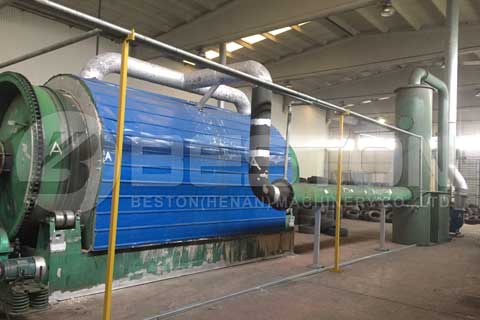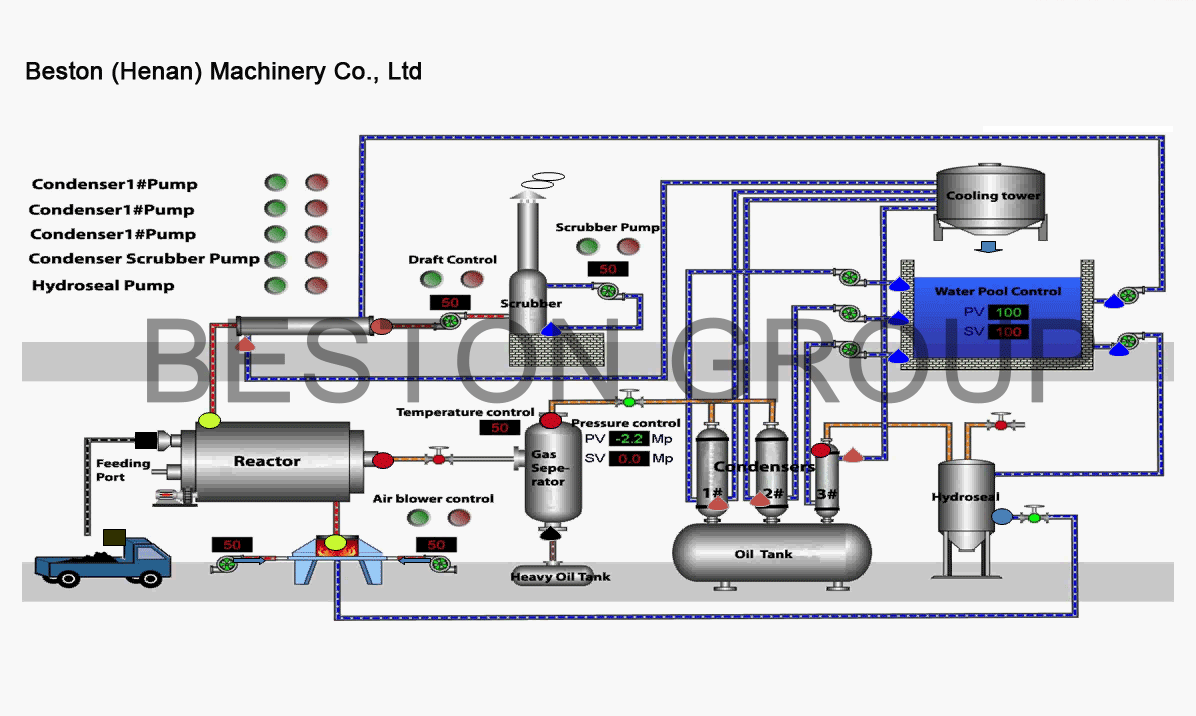If you look at the world around you, you will notice that just about everything in our modern society requires rubber components to function properly. There is rubber insulation on wires, rubber soles of shoes and most of all rubber tires on all types of transportations options from trucks to motorcycles.
It may seem that out over-dependence on rubber has caused an ecological crisis, but there is a way to help the situation out by putting all that wasted rubber to good use. If you are interested in turning old tires and wasted rubber into something more valuable, the following articles contains some helpful information.

The Advantages of a Rubber Pyrolysis Plant
There are over 300 Million tires currently being discarded each year and despite many new laws against disposing of tires improperly, many will end in the landfill. Even worse, many tires are currently in waterways, vacant lots and otherwise improperly stored and adding to the mosquito population.
Furthermore, improperly disposed tires and other rubbers have other hazard for nature. These materials are often created with other additional components that will begin leaching into the soil if not properly taken care of.
So what can be done about the incredible buildup of rubber products coming from cities and industrial zones? As it turns out, there is a way of processing tires and rubber products to create valuable materials that can have abundant usefulness in our societies today.
Pyrolysis comes from two Latin words that together mean “change by fire”. Pyrolysis (pirolisis proceso) allows things like old plastics, rubbers and other waste to be converted into more useful compounds through decomposition by fire in a tightly controlled environment.
Rubber waste products like old tires, waste wiring and other items can be stripped of valuable metals and chopped into smaller chips to be fed into the pyrolysis chamber. Items like tires and wiring have 40% to 60% materials that aren’t rubber like copper, steel and other salvageable metals. These can be removed and recycled before the tires are chopped to be fed to the machine.
One all other materials have been removed, only the rubber remains. These rubber waste materials have a high calorific content on par with natural crude petroleum and can serve as a valuable source of fuel and other materials.
The Rubber Pyrolysis Plant Process
Prepared rubber materials can be fed into the Beston Pyrolysis plant where they will be brought to high temperatures while the oxygen inside is removed. This allows for chemical processes to occur that alter the chemical components inside and create something more practical. In the high heats, rubber polymers are evaporated and removed from the reactor and condensed into the form of an oily liquid called bio oil. The evaporated polymers that are not condensed are also useful as a fuel option.

In Conclusion
The problem of rubber waste can be handled with something as simple as a rubber pyrolysis plant: https://www.bestongroup.es/la-instalacioln-de-la-pirolisis-de-caucho/. While it is a chemical process and takes some insight to work, it is really not rocket science and can be accomplished by anyone with a little introduction.